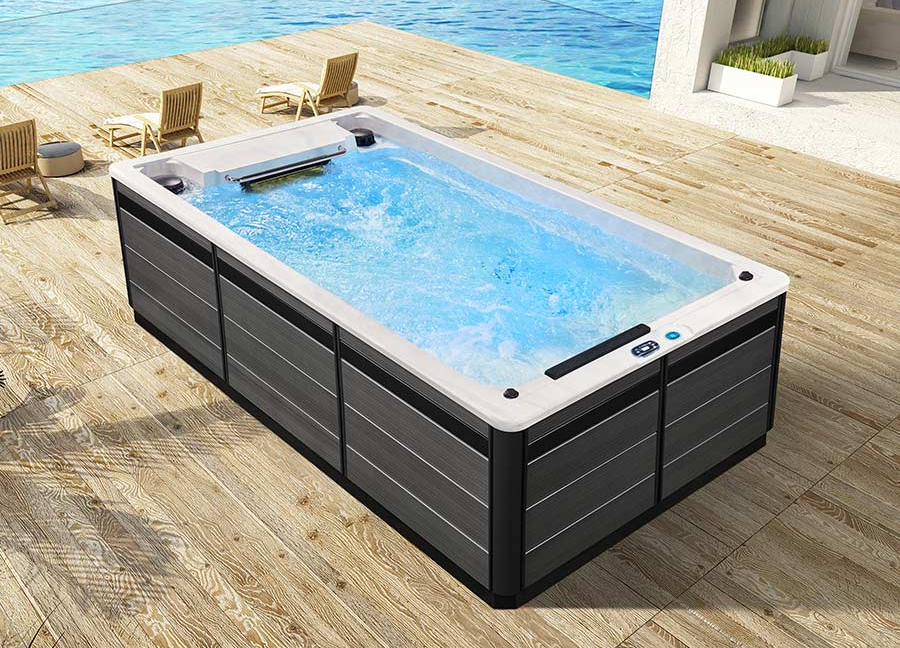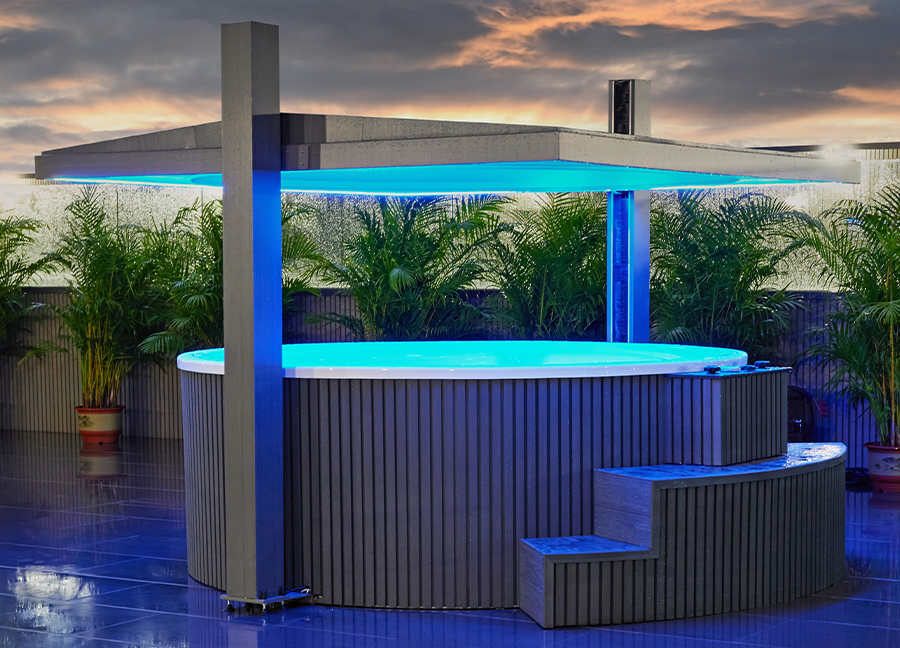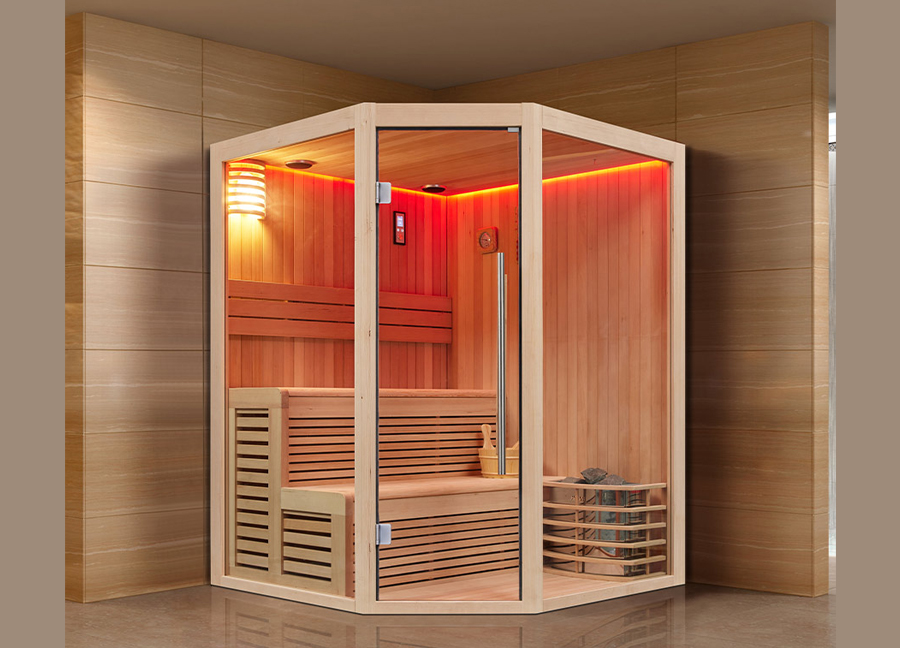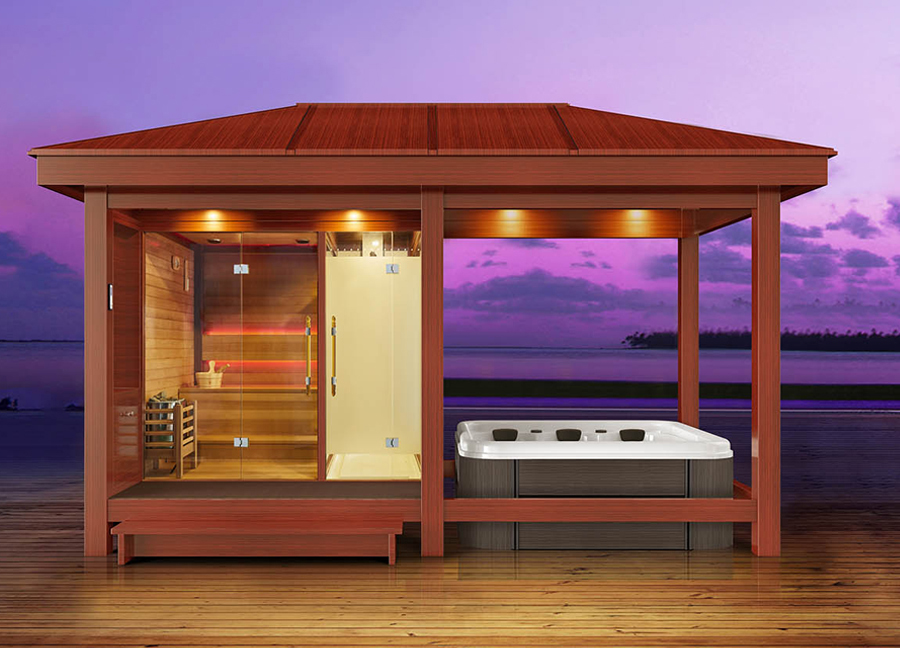With the contemporary trend of prioritizing wellness, nature, and privacy, outdoor sauna rooms have become a popular addition to villa courtyards, vacation homes, mountain B&Bs, and even urban gardens. They not only offer health benefits such as detoxification, relaxation, and enhanced circulation, but also enhance quality of life by seamlessly integrating architecture with the natural environment.
However, when considering and planning an outdoor sauna room, potential users and homeowners often raise a key question: "How long can an outdoor sauna room last?" Specifically, can these facilities withstand the elements of outdoor living, maintaining excellent condition year after year, or will their performance significantly degrade over time?
This article will provide a comprehensive analysis of this question, detailing the key factors influencing the lifespan of an outdoor sauna room from multiple perspectives, including material properties, structural design, climate, and ongoing maintenance. The article will also provide lifespan assessments and usage recommendations based on different scenarios.
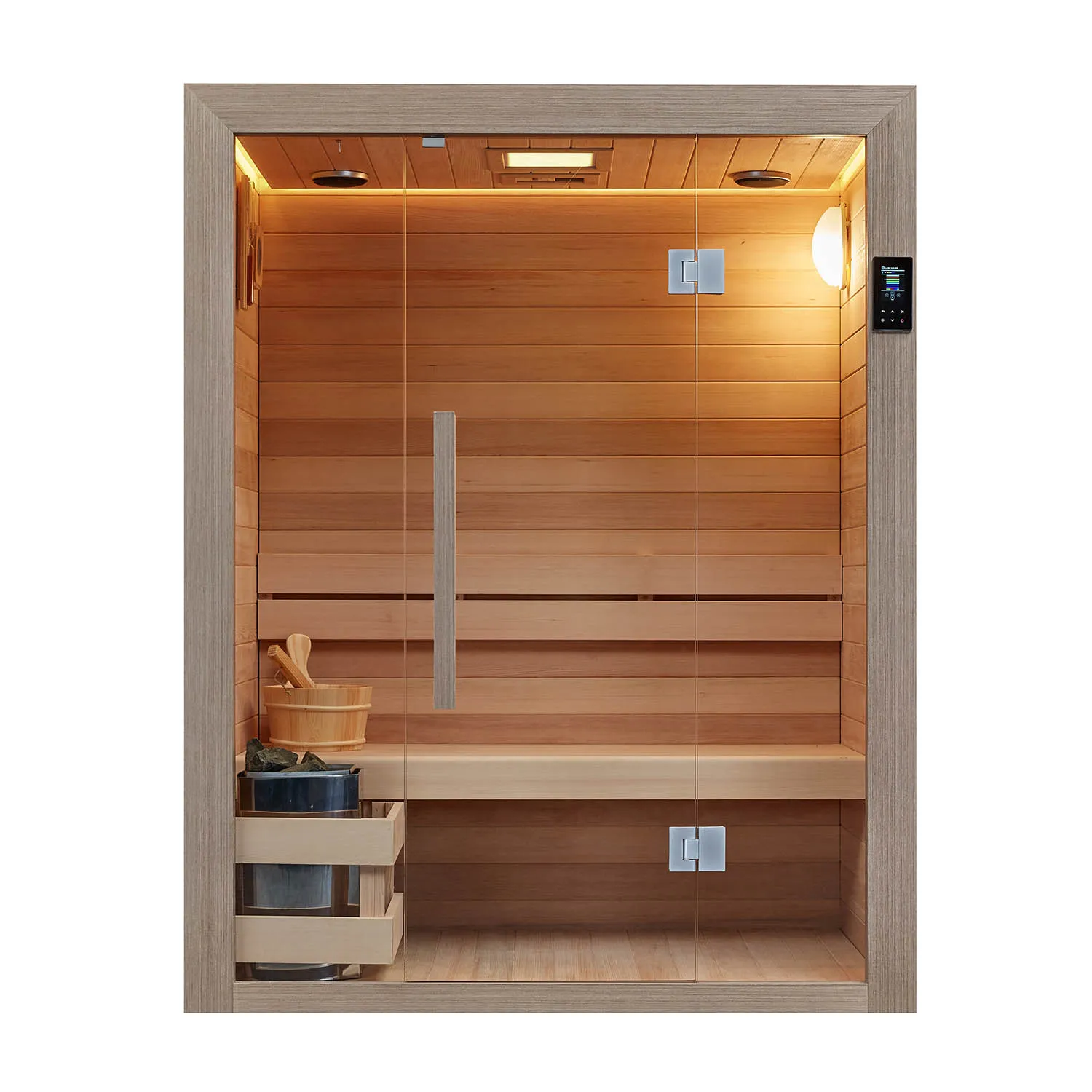
What is an outdoor sauna room? --Overview of Usage Environments
An "outdoor sauna room" is an enclosed steam or dry heat bathing space installed outdoors. Typically constructed of natural wood, it features an electric heater or steam generator to create a constant high temperature environment, allowing users to sweat and relax. Unlike indoor saunas, outdoor sauna rooms are directly exposed to the elements, facing more complex physical challenges such as UV rays, rain, wind, sand, and drastic temperature fluctuations.
Common usage scenarios include:
· Courtyard lawns and garden corners;
· Log cabin terraces and near vacation homes;
· Mountain villa decks and lakeside boardwalks;
· Beside private pools and hot spring resorts.
Due to their constant exposure to the elements, outdoor sauna rooms require far greater durability and maintenance than indoor units.
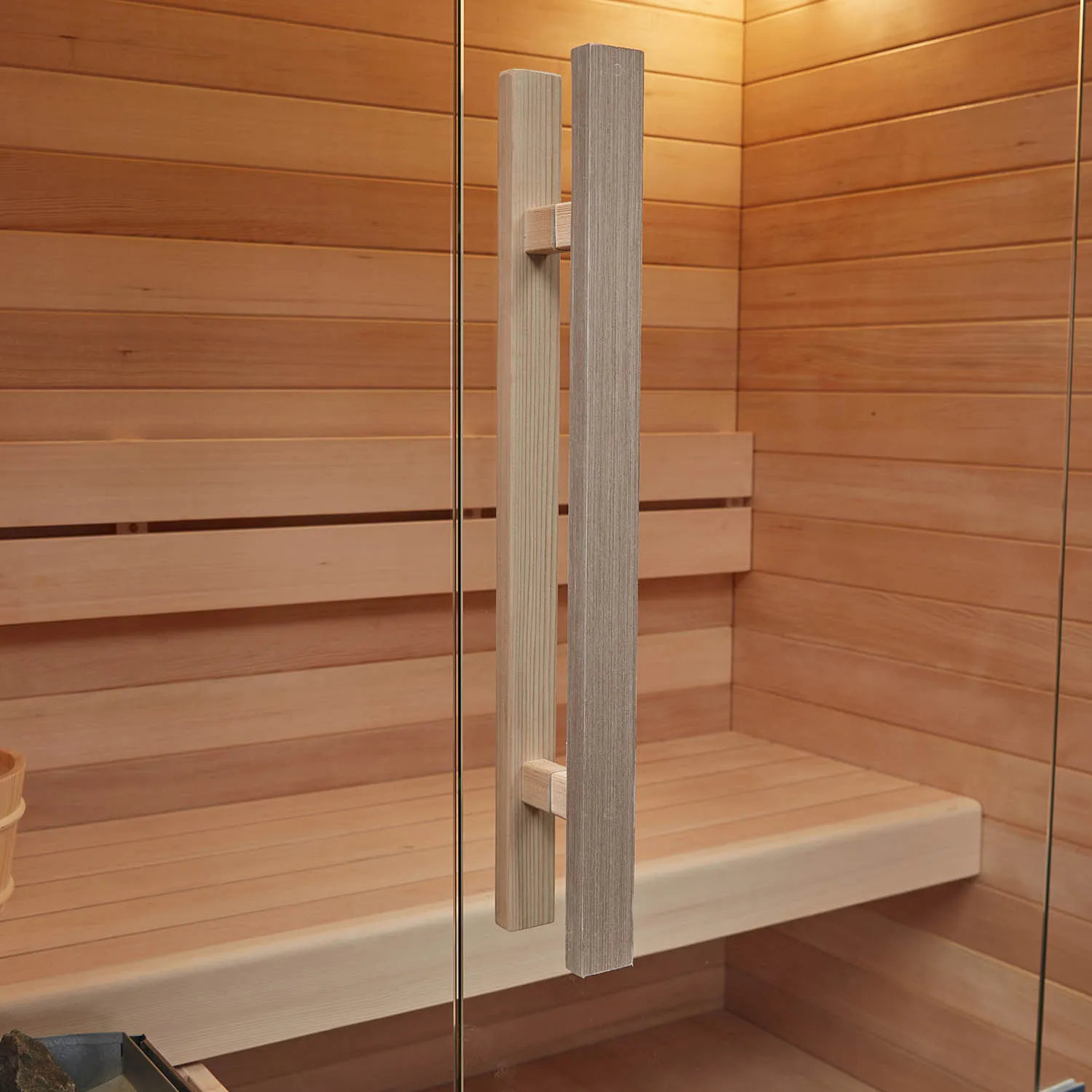
What factors affect the lifespan of an outdoor sauna room?
To scientifically answer the question, "How long can an outdoor sauna room last?", we must first understand several key variables that influence its lifespan:
1. Wood Type and Grade
Wood is the core structural material of an outdoor sauna room, and its quality directly determines the lifespan of the entire facility. Below is a brief description of several common wood types and their durability:
Wood Types | Characteristics | Expected service life (well-maintained) |
| Western Red Cedar | Corrosion-resistant, naturally antibacterial, low thermal conductivity, and stable drying performance | 25-30+ years |
| Hemlock | Excellent structural stability and a delicate texture, but slightly weaker corrosion resistance | 15-20 years |
| Aspen | Light color and fine texture, suitable for interior walls, with moderate moisture resistance | 10-15 years |
| White Pine | Low cost, soft texture, and easy processing, but with limited weather resistance | 8-12 years |
Conclusion: Red cedar is currently the most durable and suitable high-end material for outdoor use. With regular maintenance, it can reach or even exceed a lifespan of thirty years.
2. Structural Design and Craftsmanship
A rational and sound structural design determines whether a sauna room can withstand external pressure, maintain a tight seal, and resist water and mildew.
Key points include:
· Roof Design: Using a sloped or curved roof prevents snow and water accumulation;
· Ventilation System: Strategically located air intake and exhaust vents prevent internal wall rot;
· Heating Equipment Arrangement: Avoid heat sources near structural wood, which can cause localized aging;
· Sealing and Insulation: A good insulation layer can delay structural fatigue caused by thermal expansion and contraction of the wood.
Adequate construction is essential for ensuring an outdoor sauna room's stable operation despite years of high-temperature cycles and harsh weather.
3. Climate and Environmental Impacts
The impact of climate on outdoor sauna rooms varies significantly across different regions:
· Cold climates: Low temperatures and snow accumulation significantly impact the freeze-thaw cycle of wood;
· Humid and hot climates: High humidity fosters mold growth, shortening the lifespan of wood;
· Coastal environments: Salt spray is highly corrosive, damaging both metal components and the wood surface;
· Dry plateaus: Dry air and strong ultraviolet rays can easily cause wood to crack.
Therefore, the service life of a sauna room can vary by 5 to 10 years depending on the climate.
4. Daily Maintenance and Care
Maintenance directly determines whether the room's service life can be maximized. Important maintenance tasks include:
· Regularly apply an anti-corrosion coating or natural wood oil (e.g., once or twice a year);
· Check the ventilation system for unobstructed flow to prevent mold and mildew;
· Regularly descale the sauna heater and check the wiring for signs of aging;
· Protect the drains from frost in winter to prevent pipe ruptures;
· Regularly clean the door and window seals to maintain a tight seal.
The lifespan difference between poor maintenance and well-maintained outdoor sauna rooms can be over 10 years.
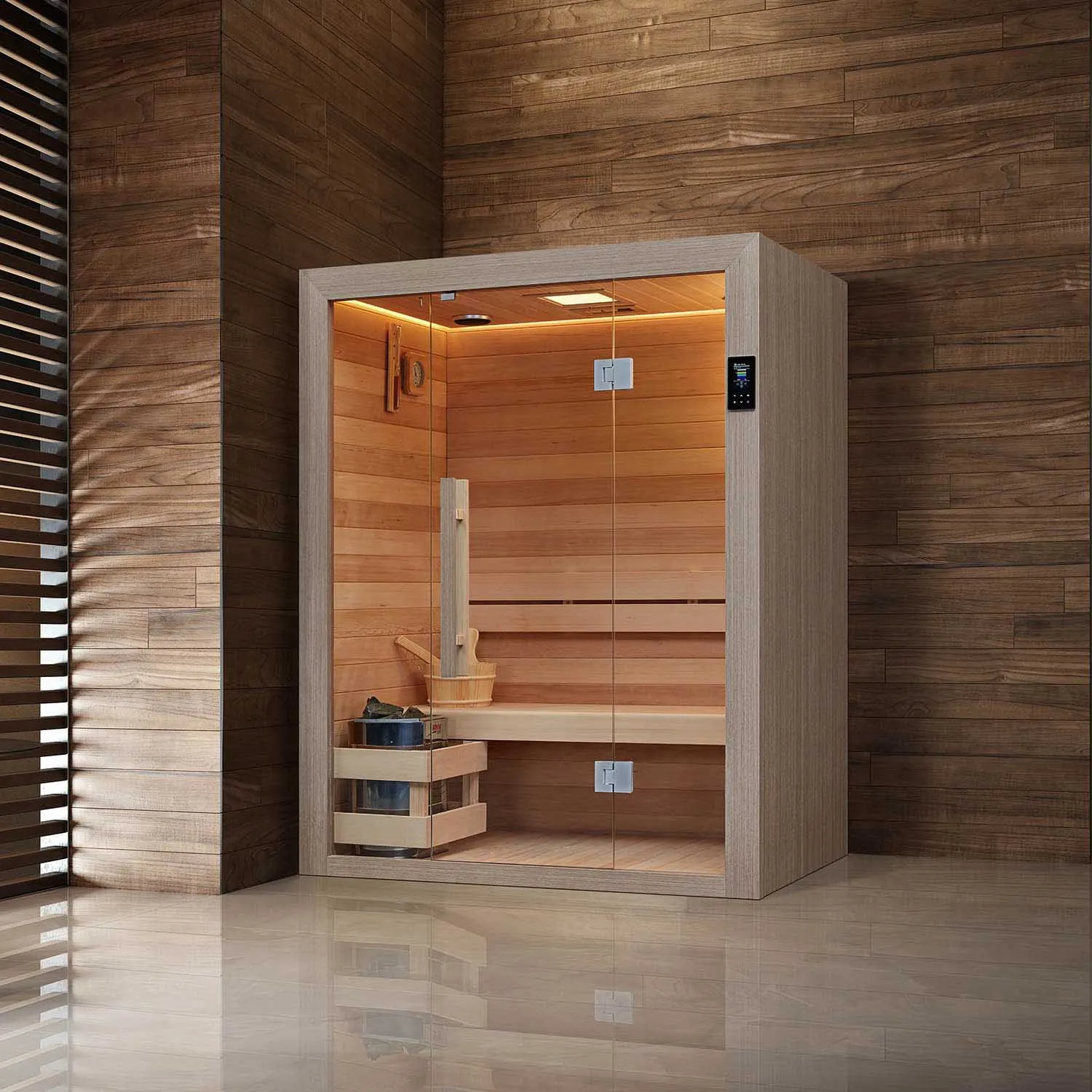
Comparing the Expected Lifespan of Outdoor Sauna Rooms of Different Materials
Based on a comprehensive consideration of material, workmanship, climate, and maintenance conditions, the following are estimated lifespans for various material combinations in a neutral climate (not extremely hot or cold) with proper maintenance:
Material Combinations | Maintenance Frequency | Life expectancy |
| Red cedar + stainless steel hardware | Twice a year | 25-35 years |
| Hemlock + hot-dip galvanized hardware | Once a year | 15-20 years |
Poplar + standard hardware | Occasional maintenance | 10-15 years |
| White pine + iron hardware | No maintenance | 5-10 years |
Therefore, if you want your outdoor sauna room to last over 20 years, you should prioritize high-grade, anti-corrosion wood (such as red cedar), scientific design, and proactive maintenance.
How to Extend the Lifespan of an Outdoor Sauna Room?
If you want your outdoor sauna room to operate stably and long-term, you should proactively address the following aspects:
1. Ensure quality during the material selection stage
· Prioritize wood with rich natural oils and strong corrosion resistance;
· Ensure the material is well dried, with a moisture content below 15%;
· Check that the wood has undergone pre-treatment processes such as degreasing and heat treatment.
2. Provide structural protection
· Ensure the base is elevated at least 5 cm above the ground to prevent moisture from accumulating underneath;
· Install drainage channels in the walls to prevent water from seeping in;
· Use dovetail joints or elastic sealing strips in joints to ensure thermal expansion and contraction without damaging the structure.
3. Install outdoor protective devices
· Use removable awnings or fixed eaves to reduce direct sunlight;
· Cover the entire roof with a waterproof cover during the rainy season;
· Lay pebbles or drainage tiles around the perimeter to prevent water from seeping up the walls.
4. Establish a regular inspection plan
Check the following items quarterly or semi-annually:
· Check for cracks or warping on the wood surface;
· Check if electrical equipment is operating properly and making any unusual noises;
· Check if metal fittings are rusted;
· Check if vents are blocked.
Myths and precautions for extending service life
✘ Myth 1: Thicker wood is more durable
Thicker wood provides greater impact resistance, but poorly selected or improperly treated wood can make it more susceptible to moisture absorption and deformation. Treatment and material grade are more critical than thickness.
✘ Myth 2: Saunas don't require ventilation
Even in cold regions, good ventilation is crucial to prevent moisture accumulation, mold, and corrosion. Unventilated structures will significantly shorten their service life.
✘ Myth 3: Waterproofing eliminates the need for maintenance
Even if the surface is well-waterproofed, physical changes like ultraviolet rays and thermal expansion and contraction can still damage the wood's structure. Maintenance is an ongoing task and should not be neglected.
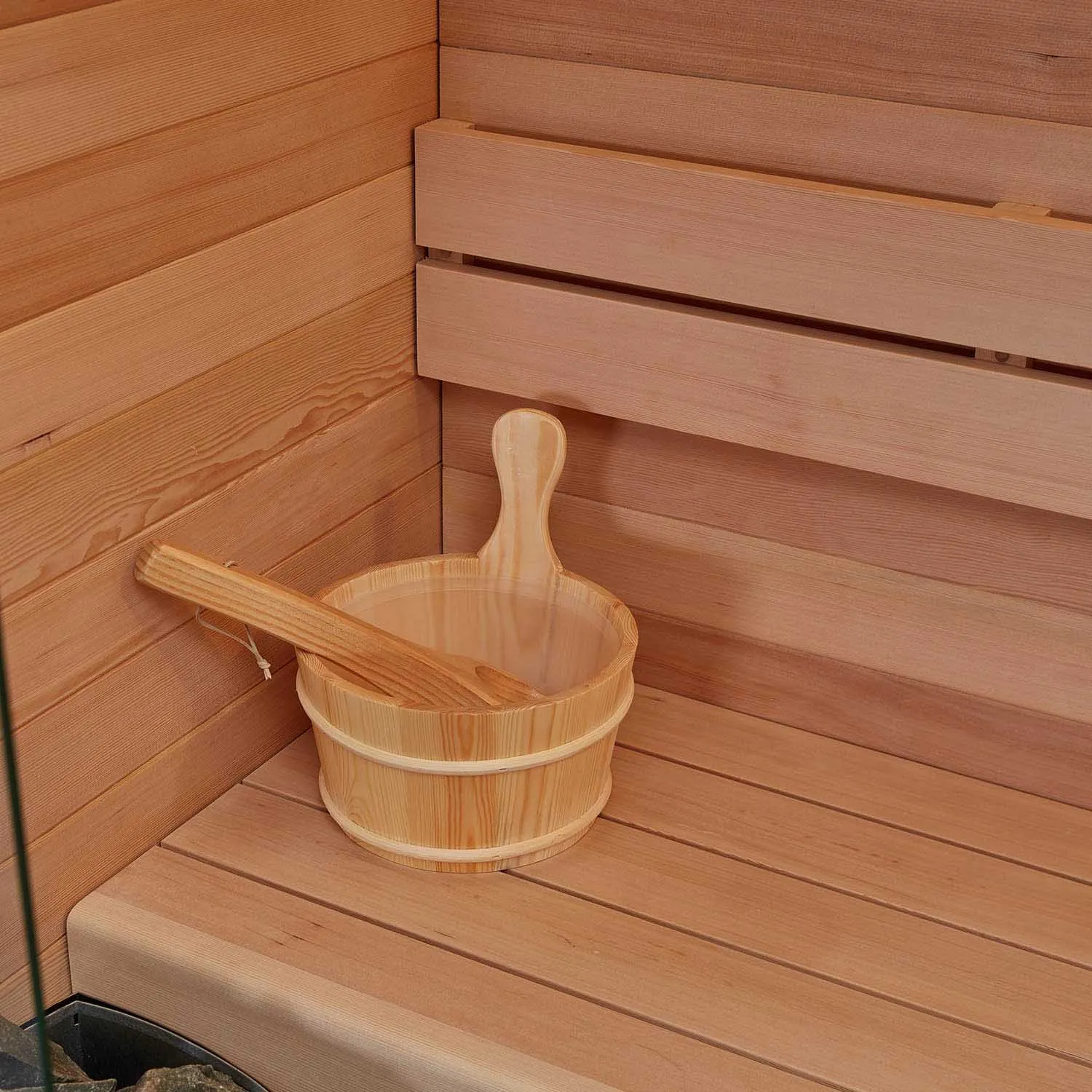
How long can an outdoor sauna room last?
-- Comprehensive analysis reveals that there's no single, standard answer to the question of "how long can an outdoor sauna room last?" It depends on a combination of factors, including material selection, construction techniques, climate impacts, and user maintenance practices.
In summary:
1. With high-quality materials (such as red cedar), professional structural design, and good maintenance, an outdoor sauna room can expect a lifespan of 25-30 years or even longer.
2. With medium-quality materials (such as hemlock or poplar) and basic maintenance measures, a lifespan of 15-20 years is considered normal.
3. If the structure is poorly designed, maintained, or if inexpensive wood is used, serious degradation problems may occur within 5-10 years.
Therefore, when choosing an outdoor sauna room, it should be viewed as a long-term investment. The initial investment in materials and structure, as well as ongoing maintenance and management over time, are fundamental to extending its lifespan and ensuring a comfortable and safe experience.
How Can I Get a Quote for My Project or Retail Store?
Getting a quote is simple—contact our sales team with your needs (products, quantity, destination), and we’ll send detailed pricing within 24 hours. Whether you're ordering a massage bathtub container or a mixed load of outdoor spas and steam bathrooms, we offer scalable wholesale options. Our prices are competitive thanks to efficient local sourcing and lean manufacturing in China.

